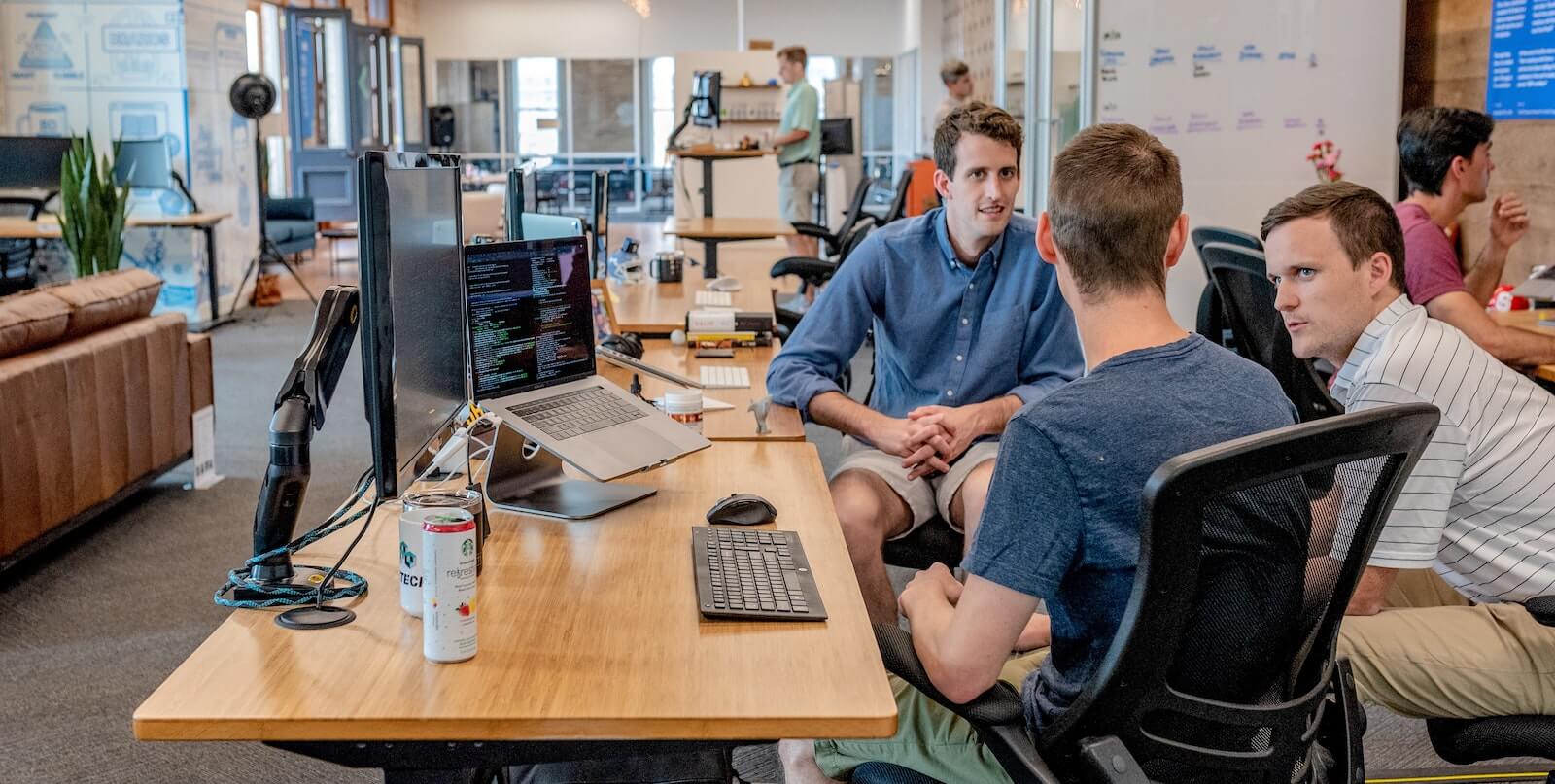Social capital is the phrase of the moment, being floated around by commercial interior design specialists, like us, who’re keen to hammer home the benefits of a shared office, as the working population becomes increasingly dispersed and nomadic. But what exactly is social capital, and what does it mean for your employees and your business?
In this article, we pull the social capital stitches apart to get to the bottom of its definition, share our advice on how to tell if your workforce is rich in social capital or not, and highlight how you can positively influence it with strategic space design.

Keep reading to find out more about the concept of social capital and how the physical working environment can have a profound impact on its success.
What is social capital?
Social capital is: “the networks of relationships among people who live and work in a particular society, enabling that society to function effectively”. In context of the workplace, it’s the relationships between people and their colleagues, and how this impacts things like productivity, trust, a sense of belonging, and company culture.
Essentially, it’s the glue that holds everybody together. Specifically, it’s idea-sharing, spontaneous interactions, professional relationships, personal friendships, casual conversations, serious discussions, differences of opinions, shared outlooks, etc.
That’s why we believe #PeopleAreJoy. Watch the video below!
Read more about our #PeopleAreJoy campaign >
How can you tell if your workplace has social capital?
Sadly, unlike financial capital, social capital isn’t that easy to quantify in value, or assets, or data, or metrics. It’s not a tangible transaction, nor can you assign any specific KPIs to measure it. For many business owners, this concept will feel super at odds to what you’re used to but trust us, it’s worth embracing.
If we were to put social capital into some sort of formulaic equation, it would probably look a little something like this:
People + interactions + relationships = value
What this ‘value’ equates to is how social capital positively impacts your business and its workforce, through things like company culture, collaboration, communication, respect, inclusivity, and idea-sharing.
You’ll know if you’re rich in social capital or in need of some social investment if you’re abundant or lacking in these things.

If your teams are cross-communicating effectively and regularly collaborating to generate innovative ideas that are driving the business forward, and if your team is happy and if every member feels equally included, your social capital is in check.
If communication lines between staff are broken down, there’s rarely any collaborative sessions, and your business is suffering as a result of poor company culture or a lack of connectivity, your social capital needs some serious attention.
The role of design and furniture in fostering social capital
We’ve spoken many times before about how office design, furniture and technology can all have a profound effect on relationship-building and communication in the workplace.
The same can be said for fostering positive social capital – employees need to be provided with the right environment if they’re going to help build the relational network that is required for social capital. This includes collaboration spaces, technology to connect remote and resident workers, and inclusive social spaces which encourage a sense of community.

This extends to the non-tangible workplace and company culture too. In today’s flexible and dynamic working world, investment into social capital also needs to be done digitally, so that those who are working from home or working remotely still feel connected to their social network (their colleagues).
Take video conferencing technology, for example – video calls and video meetings have been a lifeline for businesses having to rapidly pivot to pandemic conditions over the past 12+ months. As we move forward, businesses will need to do even more to facilitate and support these lines of contemporary communication.
Right, time to go and update our key office buzzwords of 2021 article…
See you there!


